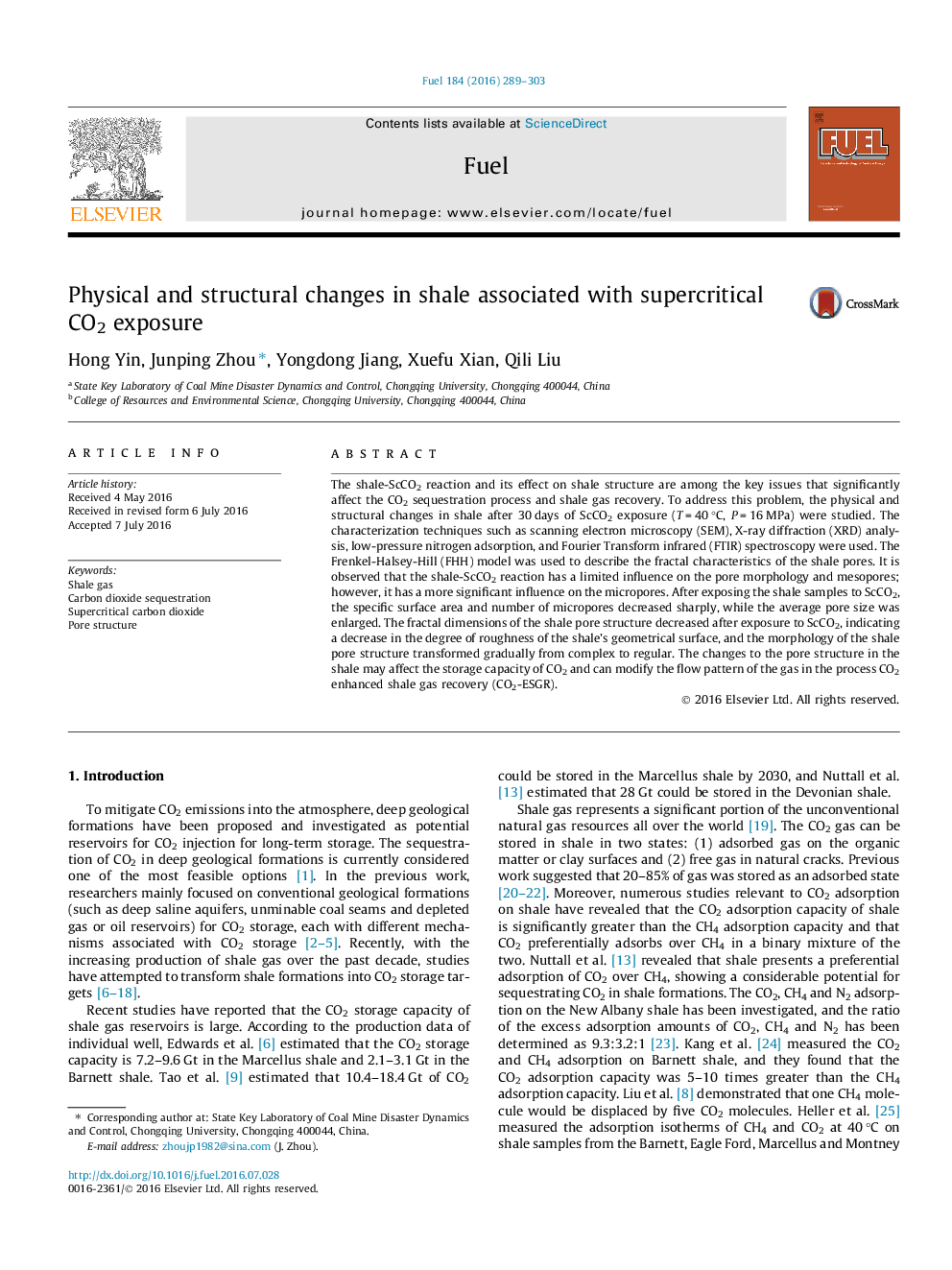| Article ID | Journal | Published Year | Pages | File Type |
|---|---|---|---|---|
| 6633008 | Fuel | 2016 | 15 Pages |
Abstract
The shale-ScCO2 reaction and its effect on shale structure are among the key issues that significantly affect the CO2 sequestration process and shale gas recovery. To address this problem, the physical and structural changes in shale after 30 days of ScCO2 exposure (T = 40 °C, P = 16 MPa) were studied. The characterization techniques such as scanning electron microscopy (SEM), X-ray diffraction (XRD) analysis, low-pressure nitrogen adsorption, and Fourier Transform infrared (FTIR) spectroscopy were used. The Frenkel-Halsey-Hill (FHH) model was used to describe the fractal characteristics of the shale pores. It is observed that the shale-ScCO2 reaction has a limited influence on the pore morphology and mesopores; however, it has a more significant influence on the micropores. After exposing the shale samples to ScCO2, the specific surface area and number of micropores decreased sharply, while the average pore size was enlarged. The fractal dimensions of the shale pore structure decreased after exposure to ScCO2, indicating a decrease in the degree of roughness of the shale's geometrical surface, and the morphology of the shale pore structure transformed gradually from complex to regular. The changes to the pore structure in the shale may affect the storage capacity of CO2 and can modify the flow pattern of the gas in the process CO2 enhanced shale gas recovery (CO2-ESGR).
Related Topics
Physical Sciences and Engineering
Chemical Engineering
Chemical Engineering (General)
Authors
Hong Yin, Junping Zhou, Yongdong Jiang, Xuefu Xian, Qili Liu,
